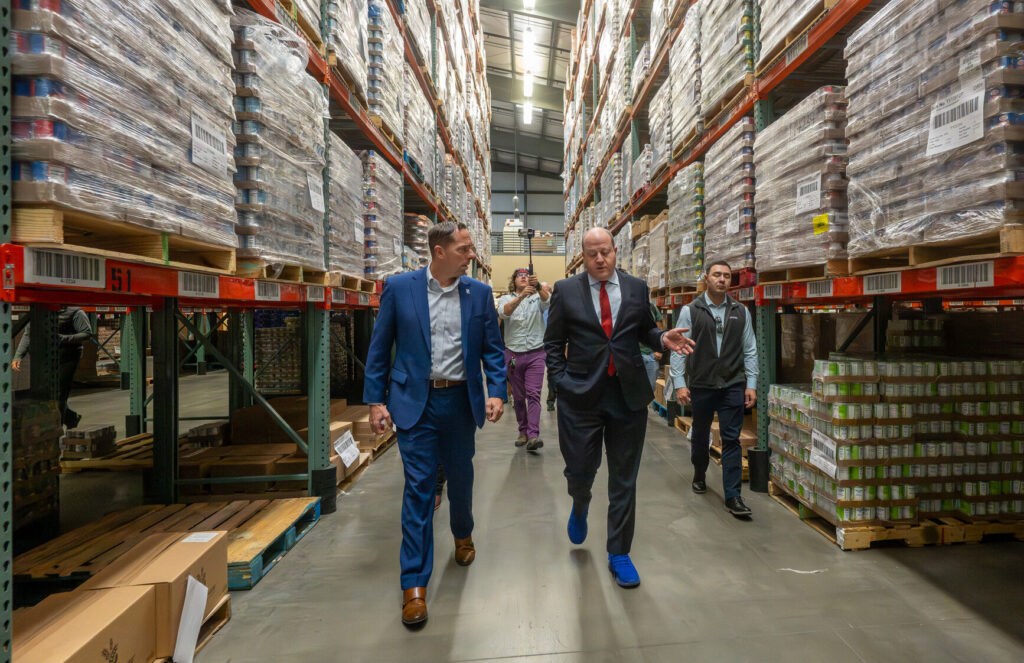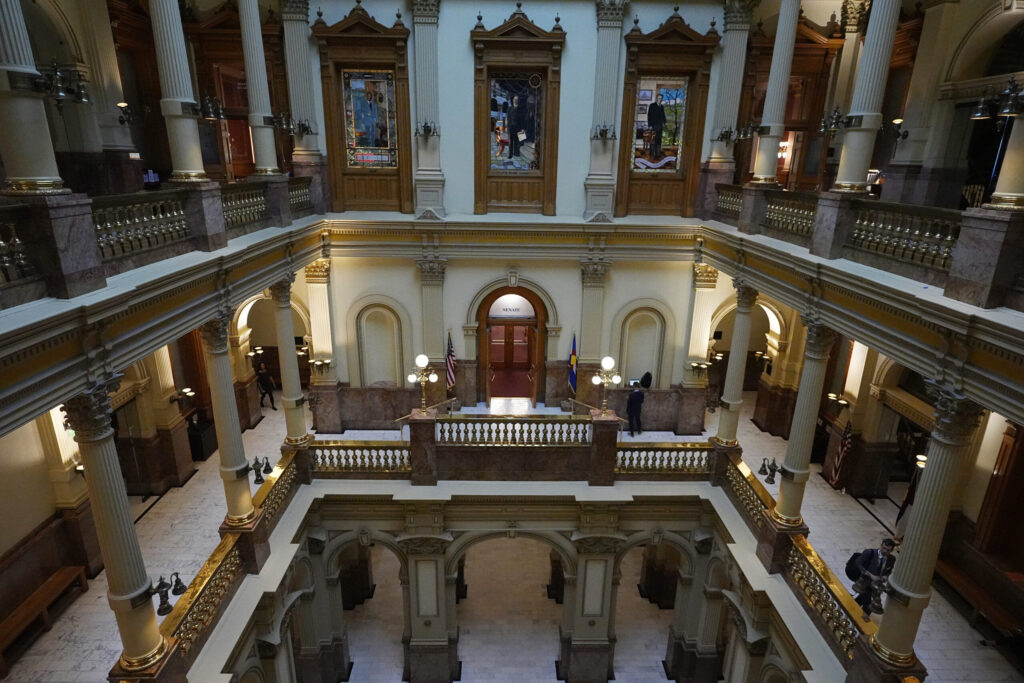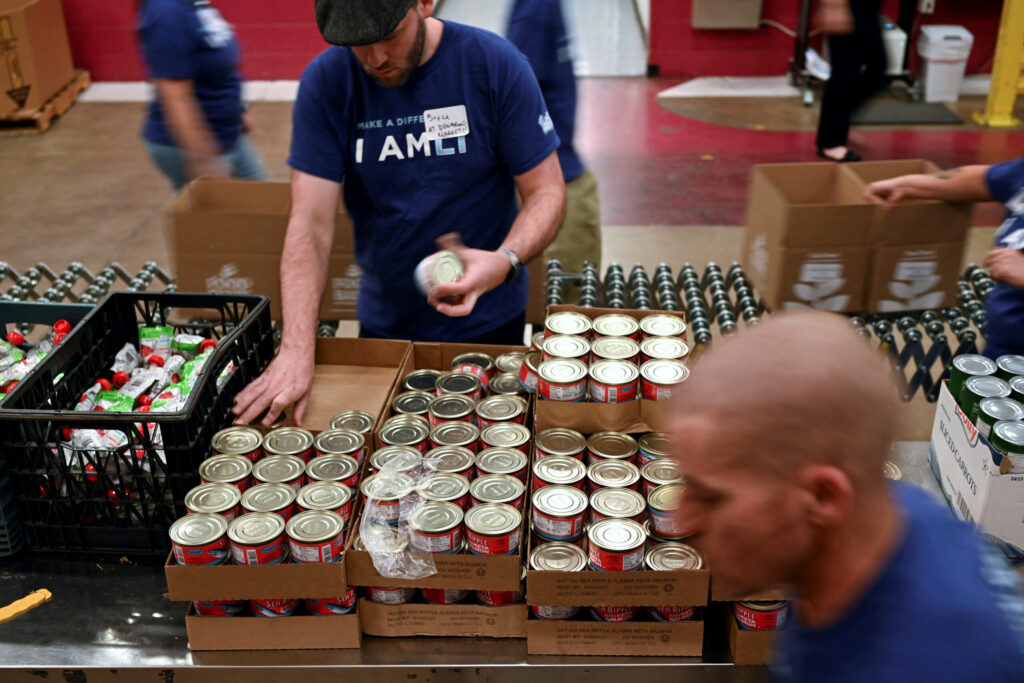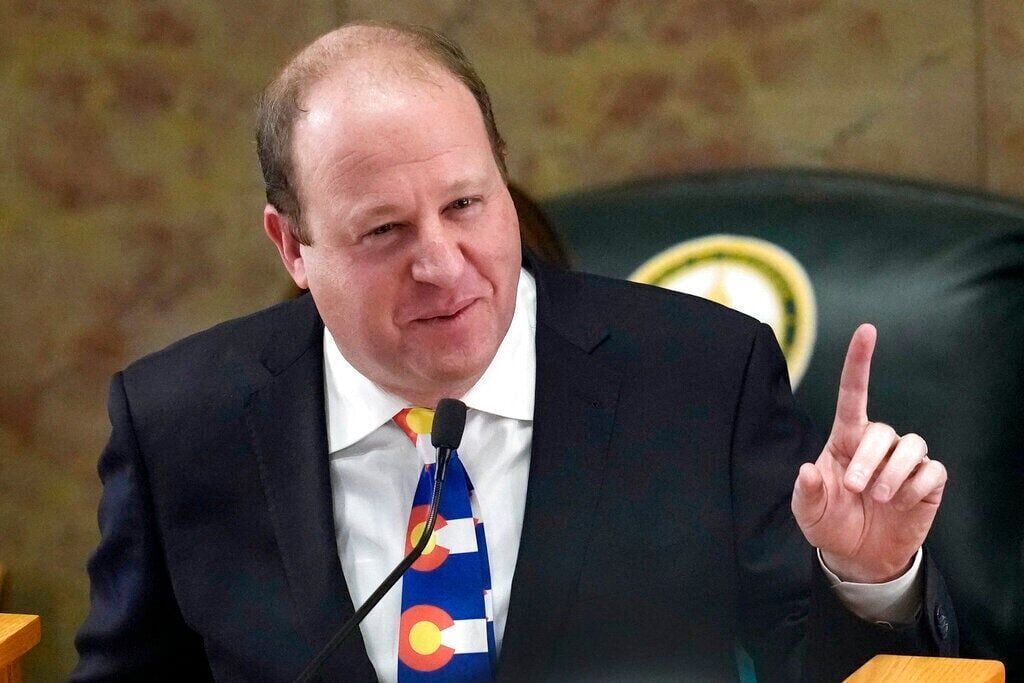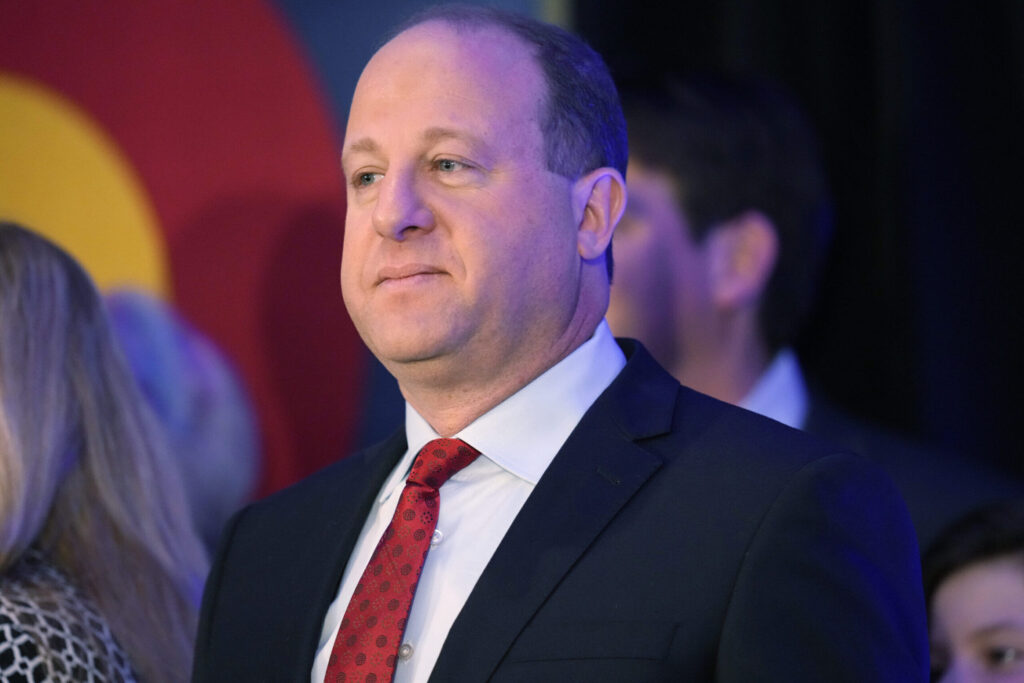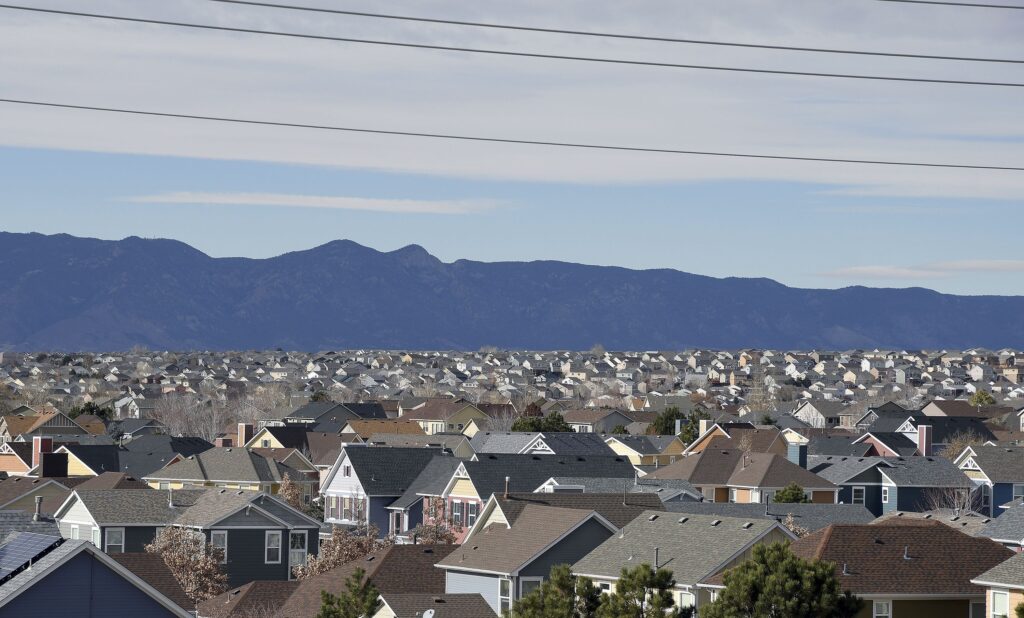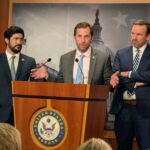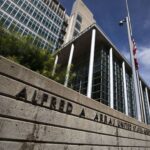Colorado’s fiscal future continues to be clouded by tariffs, revenue drops and recession fears

State economists on Monday presented continuing data that shows a weakened economic outlook for Colorado and continued risks for a near-term recession.
The Joint Budget Committee, comprised of six lawmakers from the General Assembly who annually craft the state budget, saw at least some encouraging signs. The committee’s four Democrats lauded last month’s special session, which reduced some of the impact of the federal budget, known as the H.R. 1 bill, that Democrats claim created a $1.2 billion shortfall in state revenue, primarily due to reduced corporate income tax collections.
That resulted in a $783 million shortfall in the current 2025-26 fiscal year budget. Given that state law requires a balanced budget, that put lawmakers to work last month to find about a third of that. Gov. Jared Polis proposed a hiring freeze and a series of budget cuts, with the largest being reductions in Medicaid provider rates, to cover an additional third.
What remains to be seen is whether the most significant single action taken during the special session—the sale of tax credits that would bring $100 million into the current 2025-26 budget year—will actually come to fruition.
The Legislative Council economists reported that the state’s general fund reserve, a type of rainy-day fund, will end the current fiscal year at 12.9%, approximately $306.7 million short of its 15% statutory requirement.
Much of that lowered reserve is due to tapping the reserve to cover the last third of the $783 million shortfall.
As to general fund revenue collections for 2025-26, there was some positive news. Economists revised those numbers upward from the July update that was prepared for the special session. The state should bring in about $6 million more than was anticipated two months ago.
But there won’t be a TABOR surplus this year, and that will require the General Assembly to cover certain expenses that the surplus typically handles, chiefly, the senior and disabled veterans’ homestead exemption. That means hunting for about $198 million in general fund dollars, which would be paid out in 2026.
The lack of a TABOR surplus also means Coloradans who expect certain tax credits will see much smaller ones, if at all. The tax credits all come from legislation passed by the General Assembly in 2023 and 2024.
That includes, for example, an electric vehicle, an e-bike, and a heat pump credit, which will be reduced by 50% in tax year 2026. The workforce shortage tax credit will be cut in half for 2026, and the family affordability and expanded earned income tax credits will be completely unavailable in 2026.
Then there’s the bad news: potentially more and larger budget cuts for the 2026-27 state budget.
That’s despite an expectation that the general fund will increase next year, by about 7.4%, to $18.44 billion. That’s about $700 million more in the general fund than will be collected in 2025-26.
But lawmakers will have $116 million less to spend than they did in 2025-26, once they fill the $306.7 million hole in the statutory reserve, pay for TABOR refunds from 2024, and other required transfers.
And that doesn’t consider cost increases due to caseload, such as from Medicaid, corrections, or education, inflation, or other budgetary pressures.
The forecast presented two options for lawmakers to consider for 2026-27. The first is to keep appropriations constant. That means about $116 million less to spend in the next budget year than what lawmakers had available for 2025-26.
The second option is worse. That relies on using the governor’s proposed budget actions for 2025-26, and projected obligations for 2026-27, and that means the general fund reserve would fall to 9.8 percent, or short about $841.1 million. That money has to be paid back in the following budget year.
What those obligations look like:
During the 2025 regular session, a bipartisan bill set up a “Kids Matter Account” to help pay for K-12 education. That would allow lawmakers to tap the estimated $230 million in the next year for increases in K-12 education costs, instead of relying solely on the general fund.
Funding for the Kids Matter accounts is 0.00065% of state tax revenue and is parked in the state education fund.
The forecast anticipates about $349 million in new general fund requirements for Medicaid services. Based on an inflation rate of 2.8%, higher ed would see its general fund appropriation increased by about $45 million.
Funding for state employees’ salaries would increase by more than $95 million.
However, there is still an expected hit to SNAP, food stamp benefits. All told, the cost is estimated to be around $10.7 million, as the state will be expected to pick up a larger share of administrative expenses.
The total: about $542 million will be needed to cover additional appropriations in 2026-27.
That increase would also require the reserve to be increased as well, by about $81.3 million.
That does not include any new programs that lawmakers might be considering for the 2026 session.
Chief Economist Greg Sobetski noted the state’s budget is “unusually sensitive” to the revenue forecast. That’s coupled with a higher risk of a recession, likely in the near term.
The economic forecast from the Legislative Council said most indicators show stability.
Unemployment, particularly in Colorado, remains low, the forecast said, at 4.2%, just a tick below the national average of 4.3%.
The biggest headache in planning for what’s to come remains the unknowns of tariffs.
In a statement, JBC member Sen. Judy Amabile, D-Boulder, said tariffs are driving up costs in housing as well as consumer goods.
The forecast stated that the effective tariff rate, at 8.2%, is the highest in nearly 100 years. That’s pushing up the cost of materials and consumer goods, the forecast indicated.
And those changing federal policies in areas such as tariffs will “create uncertainty for consumers and businesses, influence their behavior,” and that will have negative impacts on the economy, the forecast explained.
Tariffs will impact trade volume, push prices up, and “dampen consumer spending and business investment.”
Downside risks to the forecast include uncertainty and persistent inflation, a deteriorating labor market, fluctuating federal policy, and the usual geopolitical tensions.
The big contributors to inflation, the Legislative Council forecast said, are housing prices, followed by increased costs for education, food and medicine.
The upside is stable federal policies in some areas, reductions in interest rates by the Federal Reserve and a quicker labor market response to those interest rate reductions.
The forecast from the governor’s Office of State Planning and Budgeting should be much rosier, equipped with JBC Chair Sen. Jeff Bridges, D-Greenwood Village.
It was mainly in line with the Legislative Council’s forecast. Those economists also predicted no TABOR surplus in the current year, but “by less than expected” from the interim forecast presented to lawmakers before the special session.
Economists also said they predict better wage growth and lower inflation than that August update.
Next year, however, doesn’t look so good. The economists anticipate a weakening labor market; inflation will dampen consumer spending, and tariffs will impact business investment.
While Legislative Council economists pegged the effective tariff rate at 8 percent, OSPB’s estimate was a whopping 20.7%, nearly seven times what it was a year ago.
Sobetski told Colorado Politics the Legislative Council data captures the tariff rates in effect through the second quarter of 2025, while OSPB’s considers rates that went into effect on Aug. 1 and to the present day.
Tariffs on agriculture, mainly beef exports, have resulted in declines this year, while tariffs on motor vehicles and household appliances will cost Colorado consumers $600 million more this year.
There are also tariffs in the healthcare industry, primarily on imported medical equipment and pharmaceuticals, that will impact both providers and consumers.
A 39% tariff levied against Switzerland will impact Colorado aerospace, an industry in which Colorado businesses spent $741 million last year.
The bottom line for tariffs, according to OSPB: it depressed economic growth. “OSPB views tariff policy as the single greatest threat to economic growth,” the forecast said.
The forecast revised downward the general fund revenue expectations for June by about $17 million, leaving a $756 million deficit for 2025-26. That’s partially offset by the actions taken during the special session.
The downside risks, according to OSPB: H.R. 1. Revenue impacts from the federal tax policy changes in H.R. 1 won’t be fully realized until next year. The risks also include weakened individual income tax revenue, tied in part to federal immigration policy, and volatility in corporate profits.
On the positive: more stability in trade policy (tariffs); growth in the retail goods sector, better than expected salary and wage growth and business profits.


